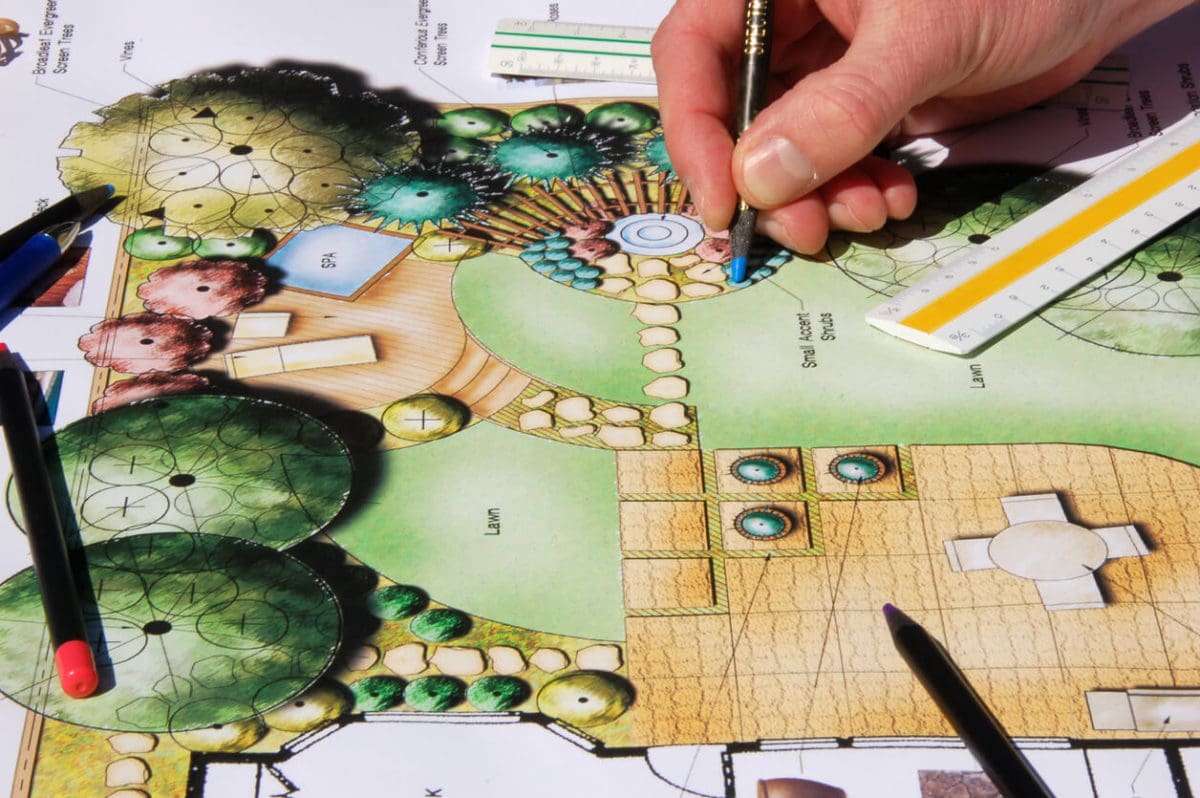Architect Guide to Sustainable Building Materials
Architect Guide to Sustainable Building Materials
Blog Article
Recognizing the Diverse Job Paths Available for Aspiring Architect
As an ambitious Architect, you have a world of occupation courses waiting for you. Whether you're drawn to traditional design or the subtleties of sustainable design, there's a particular niche that aligns with your interests.
Traditional Architecture: Creating Structures and Frameworks
Standard style concentrates on making buildings and frameworks that blend performance with aesthetic charm. As you discover this field, you'll value the detailed equilibrium between form and purpose. You'll find out to draw ideas from historical styles, integrating components like balance, materials, and craftsmanship. Your layouts can mirror cultural heritage, showcasing regional traditions while meeting modern-day needs.
You'll develop abilities in preparing, model-making, and site evaluation, enabling you to imagine and communicate your ideas effectively. Engaging with clients, you'll require to recognize their vision and convert it right into practical layouts.
In addition, developing codes and sustainability practices are important in your job, guaranteeing your frameworks are environmentally friendly and risk-free. As you expand in your profession, you'll find chances in household, commercial, and even restoration tasks, each offering special difficulties. Welcoming conventional design leads the way for a fulfilling occupation that pays homage to the past while forming the future.
Urban Preparation: Forming Neighborhoods and Public Spaces
As an ambitious Architect, you can play an important duty as an urban planner, changing exactly how neighborhoods work and interact. By employing neighborhood interaction methods, you'll ensure that homeowners have a voice in shaping their atmosphere. Plus, incorporating lasting design principles will assist produce spaces that not only fulfill today's needs but also shield the future.
Duty of Urban Planners
While numerous could consider engineers as the single visionaries behind buildings, city coordinators play an important role fit the wider landscape of communities and public areas. They evaluate land use, zoning legislations, and neighborhood needs to create sustainable atmospheres that boost quality of life. By teaming up with different stakeholders, you'll assist develop parks, transportation systems, and houses that advertise social communication and access. Urban planners likewise concentrate on ecological considerations, making certain that developments incorporate green areas and support biodiversity. Your expertise in spatial design and area dynamics enables you to envision future growth while protecting social heritage. In this vital role, you'll directly influence exactly how individuals experience their surroundings, making every task an opportunity for positive modification.
Area Interaction Strategies
Effective neighborhood engagement techniques are essential for metropolitan coordinators to ensure that the voices of homeowners are listened to and valued in the planning process. To foster meaningful dialogue, you should focus on open discussion forums and workshops where area members can express their concepts and concerns. By actively paying attention and integrating feedback, you'll produce areas that mirror the area's requirements, eventually leading to even more sustainable and effective metropolitan settings.
Lasting Layout Principles
When making city rooms, incorporating lasting layout concepts is important for creating settings that thrive both environmentally and socially. You ought to begin by concentrating on energy effectiveness, making use of materials that decrease waste and advertise recycling. Take into consideration incorporating eco-friendly spaces, like yards and parks, to boost biodiversity and improve air quality. Promoting walkability and public transportation can lessen dependence on cars, cultivating a healthier area.
Creating with water conservation in mind is additionally key-- think of rainfall yards and permeable surface areas to handle stormwater. Including area members throughout the preparation procedure assurances that the areas you create satisfy their demands and urge social communication. By welcoming these principles, you'll add to dynamic, lasting metropolitan landscapes that benefit everyone.

Landscape Design: Developing Sustainable Outside Atmospheres
As you discover landscape architecture, you'll uncover vital layout principles that produce practical and gorgeous outdoor spaces. Lasting techniques play an essential duty in making certain these settings prosper while reducing ecological impact. Plus, you'll find a variety of career possibilities that enable you to make a real distinction in just how individuals connect with nature.
Layout Concepts in Landscape
Understanding layout principles in landscape architecture is necessary for producing sustainable exterior settings that balance with nature. You'll require to ponder elements like equilibrium, range, and percentage to guarantee your layouts really feel natural and welcoming. Incorporating native plants not just enhances biodiversity yet also decreases water use, making your landscape durable. Consider the flow of space and exactly how people engage with it; paths and seating areas must welcome exploration and leisure. Additionally, take note of seasonal changes, developing with materials that enhance the environments year-round (Architect). By focusing on sustainability and aesthetic appeals, you can produce exterior rooms that improve the neighborhood and promote wellness. Embracing these concepts will set a solid foundation for your profession in landscape design.
Sustainable Practices Review
Lasting techniques in landscape style not just concentrate on visual appeals however also prioritize environmental health and wellness and source preservation. By incorporating indigenous plants, you boost biodiversity and lower the requirement for chemical fertilizers and pesticides. Carrying out efficient irrigation systems helps preserve water and reduces runoff, safeguarding close-by ecosystems. You can design areas that advertise soil health, such as using organic products and exercising permaculture concepts. In addition, including green framework, like rain gardens and porous sidewalks, help in stormwater management and reduces urban heat. You contribute to a healthier world and offer areas that foster neighborhood connection when you develop outdoor atmospheres with sustainability in mind. Inevitably, these techniques ensure your layouts benefit both individuals and the setting for many years to come.
Career Opportunities Expedition
With a solid foundation in lasting techniques, landscape design provides a range of occupation paths that permit you to make a purposeful impact on the setting. You could function as a landscape designer, producing cosmetically pleasing and functional exterior rooms, or concentrate on ecological remediation, aiding to revive damaged environments. Urban organizers often collaborate with landscape engineers to create eco-friendly navigate here spaces in city setups, improving city livability. If you're enthusiastic about education, consider coming to be a landscape style educator, motivating future generations. In addition, you may collaborate with nonprofits focused on ecological sustainability or participate in study to introduce brand-new techniques. Each course not only shapes stunning settings however likewise cultivates a healthier world for future generations.
Sustainable Layout: Concentrating on Eco-Friendly Practices
As you explore your profession in design, accepting environment-friendly techniques can establish you apart in a competitive field. Sustainable layout concentrates on creating structures that decrease environmental impact while boosting passenger health. By integrating renewable products, energy-efficient systems, and sustainable building methods, you'll add to a greener future.
Begin by obtaining expertise of environment-friendly qualifications like LEED or BREEAM, which can bolster your credentials. Take into consideration how all-natural light, air flow, and thermal efficiency can maximize style. Team up with designers and pop over here ecological consultants to introduce remedies that minimize waste and conserve resources.
Don't forget the significance of neighborhood involvement-- interesting neighborhood stakeholders can inspire styles that integrate with the setting. As customers increasingly prioritize sustainability, your expertise in environment-friendly practices will not only bring in jobs yet likewise satisfy your interest for accountable architecture. Embrace this critical facet of the occupation, and watch your profession thrive.
Historic Conservation: Protecting and Restoring Cultural Heritage
While you start on your building journey, consider the vital role of historic preservation in preserving our social heritage. This field concentrates on the protection and reconstruction of substantial buildings, websites, and frameworks that tell the tales of our past. By participating in historical preservation, you'll aid protect the building heritage that forms area identity.
As a historical preservation Architect, you'll analyze historical relevance and analyze the problem of frameworks. You'll work carefully with guardians and chroniclers to ensure authentic remediation methods are employed. This job path permits you to blend creative thinking with study, enabling you to develop solutions that appreciate original materials and workmanship.
Your job not only contributes to sustainability by reusing existing buildings yet also fosters a feeling of pride within communities. Accepting this path will help you end up being a guardian of history, preserving the stories and aesthetics that enrich our lives.
Inside Style: Enhancing Indoor Spaces
Historical conservation and interior architecture both share a commitment to boosting the developed atmosphere, but they concentrate on different elements. While historical conservation highlights preserving a framework's historic and cultural value, indoor style absolutely nos in on maximizing interior rooms for functionality and aesthetics.
As an aspiring Architect, you'll locate that interior design allows you to blend creativity with technological skills. You'll make rooms that not just look great however also advertise comfort and efficiency. This area includes understanding just how light, color, and products connect within an area, affecting mood and use.
You'll work with different tasks, from domestic homes to industrial workplaces, making sure that each atmosphere satisfies the needs of its residents. By prioritizing individual experience, you can transform interiors right into inspiring and practical areas, making a significant impact on how people connect with their surroundings. Welcome the possibility to enhance interior environments and form the means people live and work.
Industrial Style: Combining Performance With Visual Appeals
Industrial style plays an important role in creating products that perfectly blend looks with performance, guaranteeing that what you utilize everyday is not just visually appealing but likewise functional. As a hopeful Architect, you could involve on your own in this field, concentrating on designing everything from furniture to consumer electronic devices. Your job entails understanding individual needs, products, and manufacturing processes, enabling you to create cutting-edge remedies that boost everyday experiences.
In commercial style, you'll typically team up with makers, marketing professionals, and designers, guaranteeing that your styles are not only lovely however likewise possible. This profession path supplies a dynamic setting where creative thinking satisfies functionality, making it a fulfilling choice for engineers interested in shaping the products of tomorrow.
Often Asked Inquiries
What Educational Accreditations Do I Need to End Up Being an Architect?
To become an engineer, you'll need a professional degree in design, normally a Bachelor's or Master's. Furthermore, you'll have to finish a teaching fellowship and pass the Architect find here Enrollment Examination to exercise legitimately.
Exist Accreditation Demands for Different Architectural Profession Paths?
Yes, there're certification requirements for various building courses. Architect. You'll need to pass tests, full teaching fellowships, and often pursue specialized training, relying on your chosen focus, like landscape architecture, city style, or historical conservation
What Software Abilities Are Crucial for Designers Today?

Exactly How Can I Gain Practical Experience While Researching Style?
You can obtain useful experience by interning at building companies, joining style competitors, volunteering for area projects, or collaborating with classmates on real-world projects. These chances enhance your abilities and construct useful connections in the market.
What Job Opportunities Exist Outdoors Conventional Style Firms?
You can check out numerous work opportunities outside traditional architecture firms, like metropolitan planning, interior decoration, landscape style, construction monitoring, property development, and even functions in sustainability consulting. Each deals unique obstacles and incentives.
Whether you're attracted to conventional architecture or the nuances of lasting layout, there's a specific niche that straightens with your rate of interests.When designing city spaces, incorporating lasting design principles is critical for producing environments that flourish both ecologically and socially.As you check out landscape architecture, you'll discover crucial style concepts that produce lovely and practical outdoor rooms.Understanding design concepts in landscape architecture is essential for producing lasting outdoor settings that balance with nature.In commercial design, you'll usually collaborate with designers, suppliers, and online marketers, ensuring that your designs are not only stunning however additionally viable.
Report this page